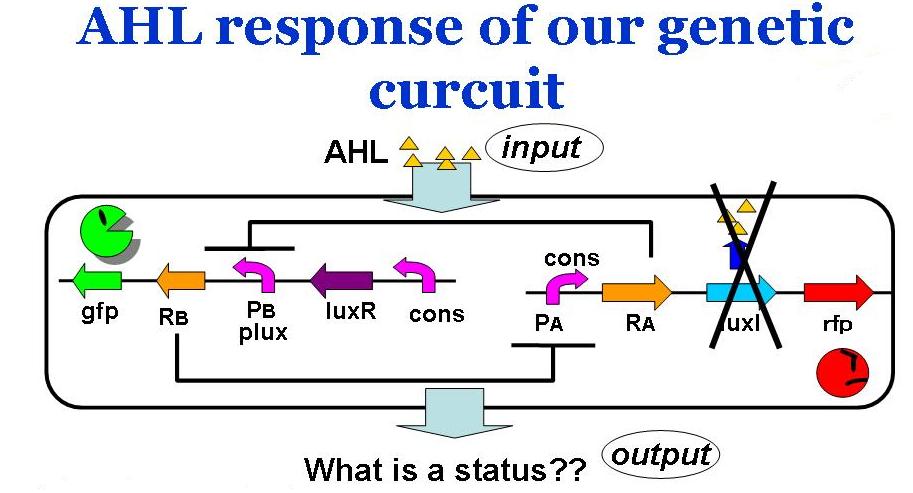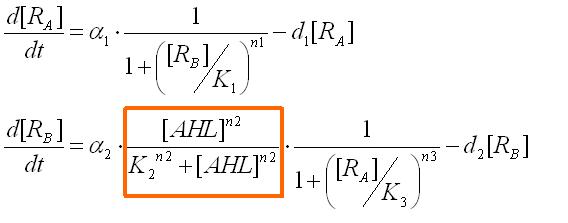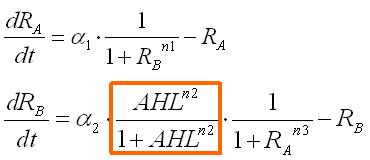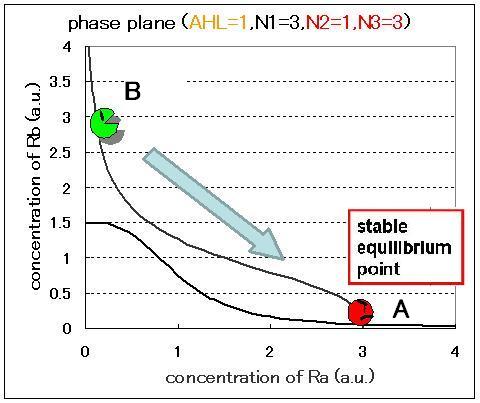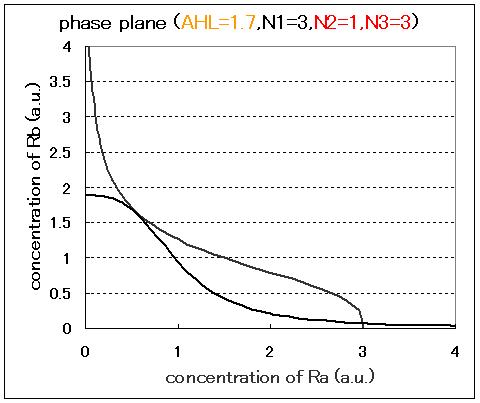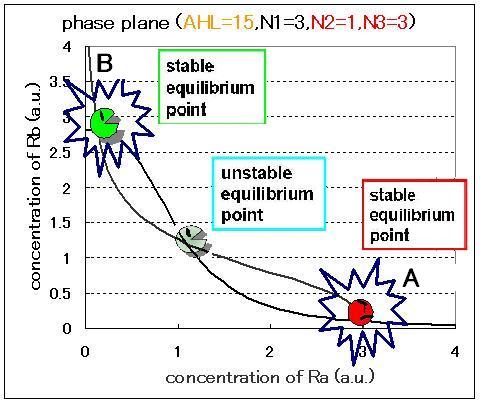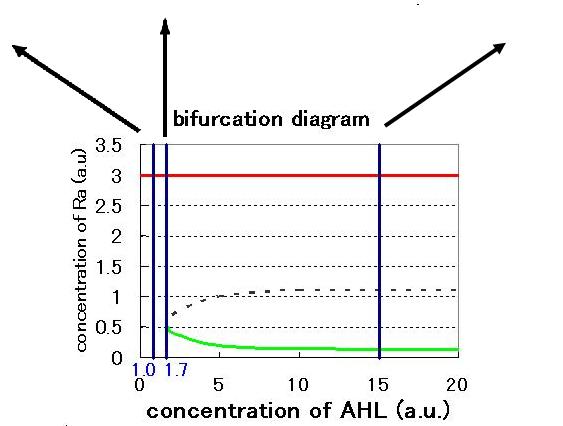Tokyo/Formulation/2.toggle model with hybrid promoter
From 2007.igem.org
| Line 25: | Line 25: | ||
<br>The phase plane and the bifurcation diagram are shown in Fig.2.3.A-C and Fig.2.4: | <br>The phase plane and the bifurcation diagram are shown in Fig.2.3.A-C and Fig.2.4: | ||
| - | <br>[[Image:step2-4.JPG|300px|left|thumb|Figure 2.3.A [AHL]=1.0 (a.u.)]][[Image: | + | <br>[[Image:step2-4.JPG|300px|left|thumb|Figure 2.3.A [AHL]=1.0 (a.u.)]][[Image:step2-5.JPG|270px|left|thumb|Figure 2.3.B [AHL]=1.7 (a.u.)]][[Image:step2-6.JPG|300px|none|thumb|Figure 2.3.C [AHL]=15 (a.u.)]] |
<!-- | <!-- | ||
Revision as of 21:17, 26 October 2007
Works top 0.Hybrid promoter 1.Formulation 2.Assay1 3.Simulation 4.Assay2 5.Future works
Step1 Step2 Step3
Step.2 Single cell model with hybrid promoter
Assuming the system where E. coli does not produce AHL by themselves, we have observed the system's reaction to ab extra AHL. The ODEs were obtained as
where the factor surrounded in the orange box represents the activation of promoter B.
These equations were normalized as follows:
Fig 2.2 represent the our thinking behavior of this system.
- with low concentration of AHL, the B state becomes unstable. so that the cells at the B state move to the A state which is stable.
- with hign concentration of AHL, both A and B states are stable.The cells at the A state keep the A state and that at the B state keep the B state.
The phase plane and the bifurcation diagram are shown in Fig.2.3.A-C and Fig.2.4:
Step.2 >> Step.3
